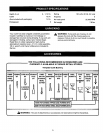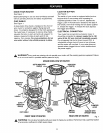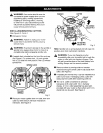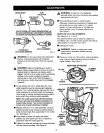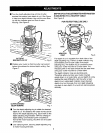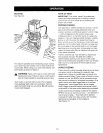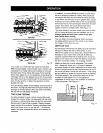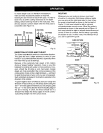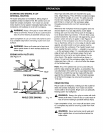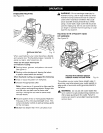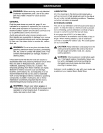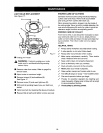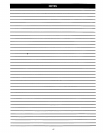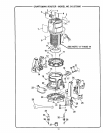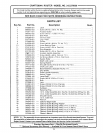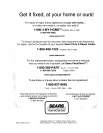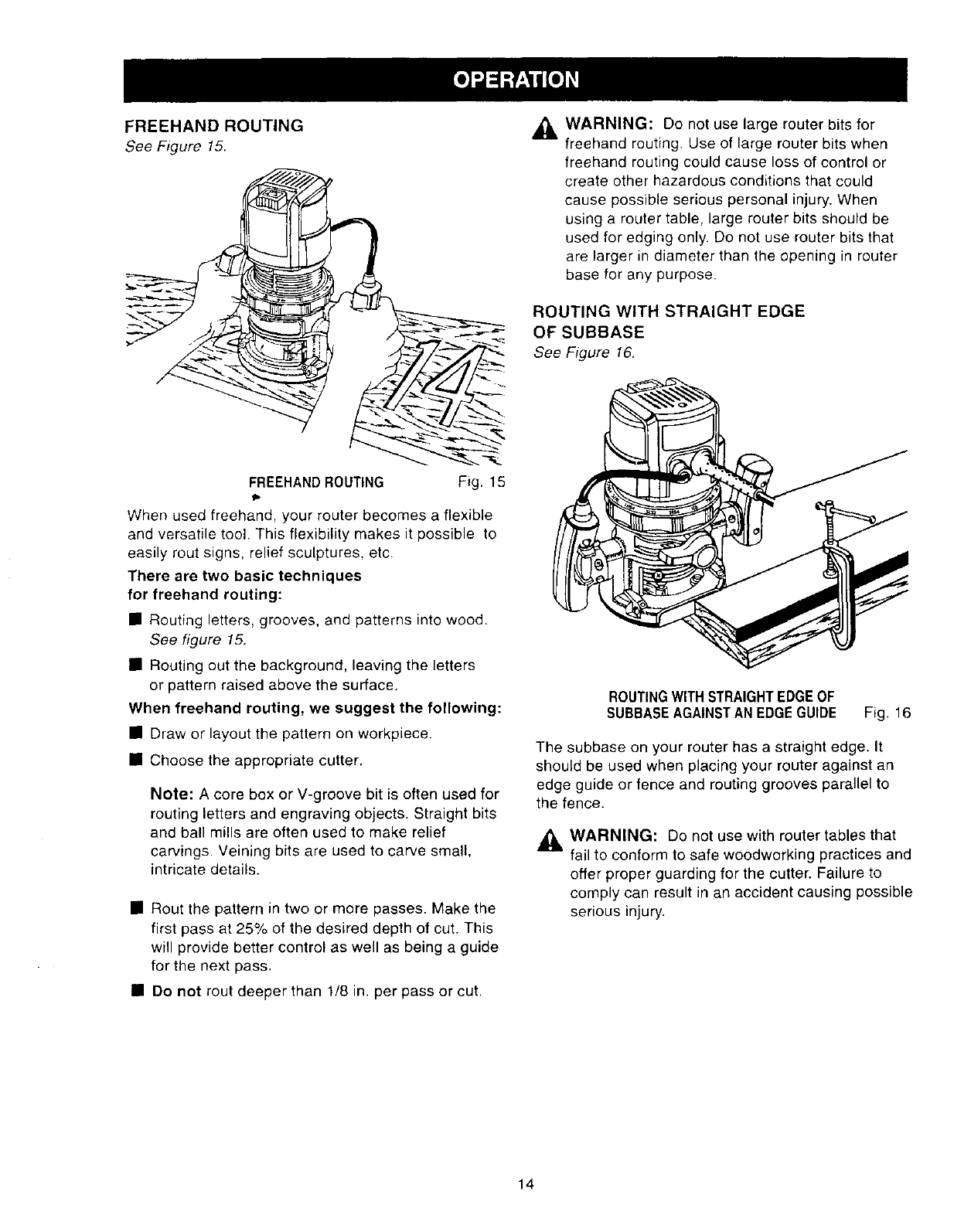
FREEHAND ROUTING
See Figure 15.
FREEHANDROUTING
._ r..._k--.----_
F_g. 15
When used freehand, your router becomes a flexible
and versatile tool. This flexibility makes it possible to
easily rout signs, relief sculptures, etc.
There are two basic techniques
for freehand routing:
• Routing letters, grooves, and patterns into wood.
See figure 15.
• Routing out the background, leaving the letters
or pattern raised above the surface.
When freehand routing, we suggest the following:
• Draw or layout the pattern on workpiece.
• Choose the appropriate cutter.
Note: A core box or V-groove bit is often used for
routing letters and engraving objects. Straight bits
and ball mills are often used to make relief
carvings. Veining bits are used to carve small,
intricate details.
• Rout the pattern in two or more passes. Make the
first pass at 25% of the desired depth of cut. This
will provide better control as well as being a guide
for the next pass.
• Do not rout deeper than 1/8 in. per pass or cut.
,_ WARNING: Do not use large router bits for
freehand routing. Use of large router bits when
freehand routing could cause loss of control or
create other hazardous conditions that could
cause possible serious personal injury. When
using a router table, large router bits should be
used for edging only. Do not use router bits that
are larger in diameter than the opening in router
base for any purpose.
ROUTING WITH STRAIGHT EDGE
OF SUE]BASE
See Figure 16.
ROUTINGWITHSTRAIGHTEDGEOF
SUBBASEAGAINSTAN EDGEGUIDE Fig. 16
The subbase on your router has a straight edge. It
should be used when placing your router against an
edge guide or fence and routing grooves parallel to
the fence.
_, WARNING: Do not use with router tables that
fail to conform to safe woodworking practices and
offer proper guarding for the cutter. Failure to
comply can result in an accident causing possible
serious injury.
14



